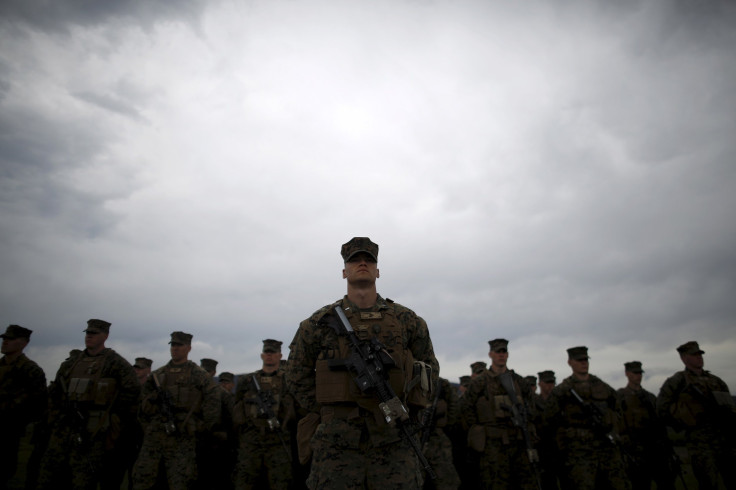New Army Actuarial Model Predicts Which Soldiers Will Commit Violence, Including Assault, Other Crimes

Who among military personnel is most likely to commit a violent crime at work or at home? Harvard Medical School researchers have developed a new machine learning model that accurately predicted some soldiers at high risk for perpetrating assault, murder, or other violent acts. Relying on administrative data, their study results suggest disadvantaged socioeconomic status, early career stage, prior crimes, and mental disorder treatment are identifying characteristics of soldiers most likely to turn violent.
"Between 305 and 399 violent felonies were committed per year during the years 2006 through 2011 for every 100,000 United States Army soldiers, while close to 4 percent of soldiers in post-deployment surveys reported recent physical fights where they used a knife or gun," wrote the researchers.
In 2008, The New York Times found 121 Iraq or Afghanistan veterans who committed murder (or were charged with one) after returning home. Within the Department of Defense itself, nearly 8,000 substantiated incidents of domestic abuse and intimate-partner violence were reported during fiscal year 2013. Meanwhile, the MilitaryTimes reported nearly 5 percent of active duty women and 1 percent of active duty men had unwanted sexual contact during 2014. The current study was “an attempt to develop an actuarial model using machine learning methods to predict future violent crimes among U.S. Army soldiers.”
The research, funded by the Department of Defense, is part of the Army Study To Assess Risk and Resilience in Servicemembers or STARRS.
STARRS
Investigators of the Army STARRS project, which ran from July 2009 through June 2015, conducted various studies examining the mental health resilience of soldiers. During the study period, findings were reported back to senior Army leadership who applied what had been learned to ongoing efforts for prevention of suicide and promotion of well-being. Ultimately, the findings from Army STARRS are expected to one day benefit the nation as a whole.
For this current STARRS study, the researchers began with an analysis of administrative data available for all 975,057 regular army soldiers on active duty between 2004 and 2009. Of the total soldiers, 5,771 committed a major physical violent crime (murder-manslaughter, kidnapping, aggravated arson, aggravated assault, robbery) during the study time period. Next, the team examined hundreds of potential predictors of violence and finally, they constructed an actuarial model based on their analysis.
The 5 percent of soldiers classified by the final actuarial model as having the highest predicted risk accounted for 36.2 percent of all major physical violent crimes committed by men and 33.1 percent by women over the six year study period. When the researchers applied their model to the period of 2011 through 2013, the 5 percent of soldiers with highest predicted risk accounted for 50.5 percent of all major physical violent crimes.
“Key predictors were indicators of disadvantaged social/socioeconomic status, early career stage, prior crime, and mental disorder treatment,” wrote the researchers.
Previous work by members of the same team had examined attempted suicide during the same study period. Between 2004 and 2009, the Army experienced the longest sustained increase in suicide rates relative to all other military branches. Results of this prior study showed enlisted soldiers had higher odds of attempting suicide if they were female, had entered the Army at 25 or older, were currently 29 or younger, had not completed high school, were in the first four years of service, and had a mental health diagnosis during the previous month. For officers, odds of a suicide attempt ranged higher if an officer was female and entered the Army at 25 or older and had a mental health diagnosis in the previous month.
The one characteristic common to all who commit violence, whether directed against others or themselves, appears to be a mental health issue. Youth and early career stage also seem to play some role in predictable violence.
"The U.S. Army does not currently use actuarial methods to identify soldiers at high risk of committing violent crimes," concluded the authors of the study, who say the relatively high accuracy rate, when compared to other risk assessment tools, suggest these new actuarial models "might be useful for determining which soldiers should receive more intensive risk evaluations or interventions."
Source: Rosellini AJ, Monahan J, Street AE, et al. Predicting non-familial major physical violent crime perpetration in the U.S. Army from administrative data. Psychological Medicine. 2015.



























